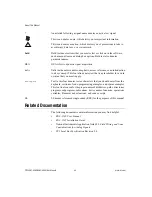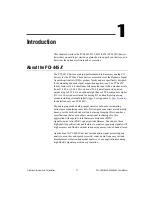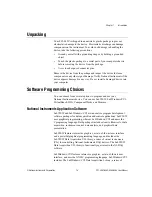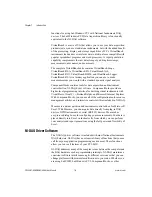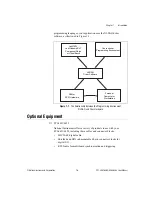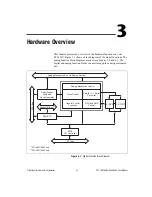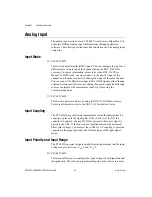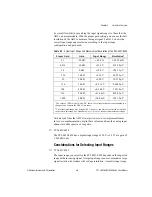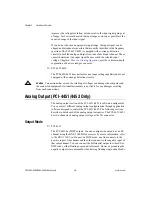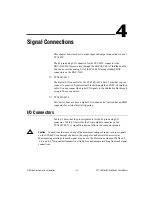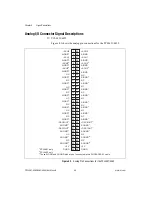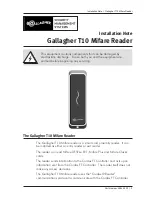
Chapter 3
Hardware Overview
©
National Instruments Corporation
3-5
PCI-4451/4452/4453/4454 User Manual
its overall flexibility by matching the input signal ranges to those that the
ADC can accommodate. With the proper gain setting, you can use the full
resolution of the ADC to measure the input signal. Table 3-1 shows the
overall input range and resolution according to the input range
configuration and gain used.
All data read from the ADC is interpreted as two’s complement format.
In two’s complement mode, digital data values read from the analog input
channel are either positive or negative.
♦
PCI-4453/4454
The PCI-4453/4454 has a bipolar input range of 20 V (±10 V) at a gain of
1.0 (0 dB) only
Considerations for Selecting Input Ranges
♦
PCI-4451/4452
The input range you select for the PCI-4451/4452 depends on the expected
range of the incoming signal. A large input range can accommodate a large
signal variation, but reduces the voltage resolution. A smaller input range
Table 3-1.
Actual Input Range and Measurement Resolution of the PCI-4451/4452
Linear Gain
Gain
Input Range
Resolution
1
0.1
–20 dB
±42.4 V
2
3.0518 mV
2
0.316
–10 dB
±31.6 V
965.05 µV
1.0
0 dB
±10.0 V
305.18 µV
3.16
10 dB
±3.16 V
96.505 µV
10
20 dB
±1.00 V
30.518 µV
31.6
30 dB
±0.316 V
9.6505 µV
100
40 dB
±0.100 V
3.0518 µV
316
50 dB
±31.6 mV
965.05 nV
1000
60 dB
±10.0 mV
305.18 nV
1
The value of 1 LSB of the 16-bit ADC; that is, the voltage increment corresponding to a
change of one count in the ADC 16-bit count.
2
The actual input range is by design ±100 V; however, the device is not tested or certified
to operate in this range. See Appendix A,
, for absolute maximum ratings.

